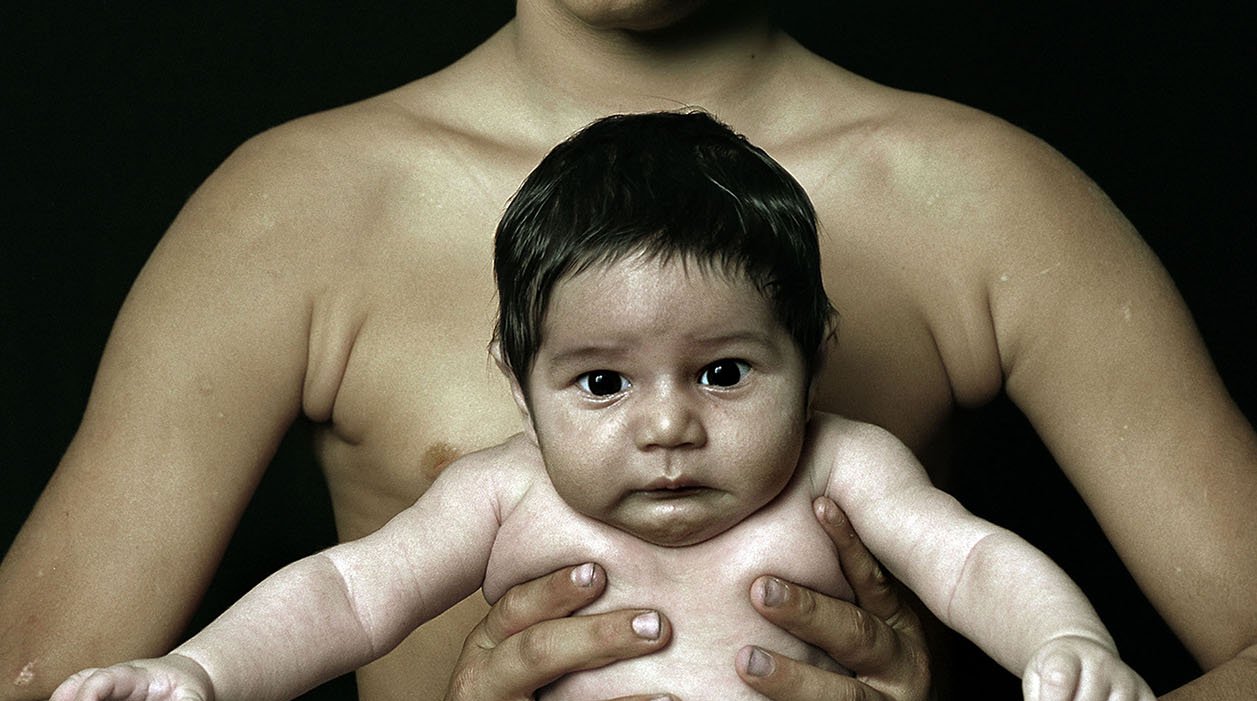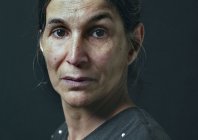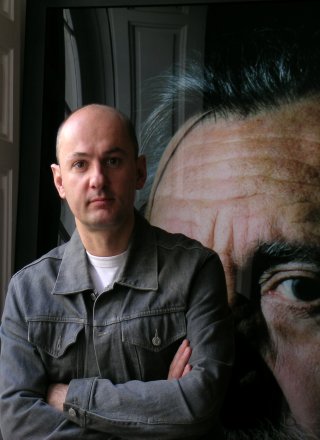
The Portrait Test
Pierre Gonnord
Silence. Palpable silence, deep silence emanates from his portraits; the silence of a community of monks in the courtyard of the Couvent des Minimes, the silence of models in the seclusion of the studio, a silence that is a force both isolating and shared, the silence before the first murmur of dialogue. It is not the silence of a void; quite the opposite, it is the silence of introspection, the silence leading to an encounter with another being, to the understanding of the other being. Pierre Gonnord clearly aims at this specific, personal approach, developed with reciprocity, thoroughness and scrutiny, able to decode a society so muddled and now so complex that it is beyond our grasp. Here we see his determination to wrench his model from oblivion, to defy death; plus the urge to record his subject in the context of the story and cultural background. Pierre Gonnord willingly offers an alternative to the standard art of portrayal, thus refusing to acknowledge passers-by with blurred faces, fleeting silhouettes set against an urban environment. Like a painter with a sketch book, he discovers and uncovers characters impervious to fashion and to the rules and regulations of consumer society; he finds those who are different or are on the fringe for reasons of nature, social background or personality.
Preview


He gives them scope for dialogue, scope to sit, and to think. Leonardo da Vinci, it is said, maintained that the first painting was nothing more than the outline of a human shadow cast on a wall, and that the second stage was the depiction of a body with the illusion of three dimensions on a flat surface. Pierre Gonnord can be seen imposing his own simplicity, carefully placing his characters against the background – a blank, even background devoid of any descriptive content, invariably expressed in dark shades to enhance the contrast with the light cast on the face. He creates head and shoulder portraits, full-face or three-quarters, where the model looks overtly at the camera, banishing any smile or semblance of visible emotion, eliciting great tension, as if offering the soul in an introspective dialectic between the artist and his model. The lighting for all the shots is subtle – only two sources of light, no artifice – simply highlighting the outline of the face and tempering any conspicuous features, with no indulgence in artificial shadows carefully cast so as to shape the characters. The tension arises from a perfectly controlled style of photographic composition, with tightly framed shots positioning the face in a striking compositional balance built on the forceful lines of the four-sided format and an even distribution of areas of shade and areas of light. The principles adopted and propounded by Pierre Gonnord are: empty space, monochrome shade and neutral setting, thus focusing attention on the model and on the truth inherent in the model, in his constant quest for primal beauty, for original, immaculate beauty untouched by the corrupt forces of society, he depicts his models either naked or simply clad in ordinary attire. A dignified, solemn tone pervades the series of portraits of gypsies in Perpignan, a series where Pierre Gonnord expresses both artistic commitment and social concern. These people are no doubt some of the most vulnerable beings to observers in mainstream society, but they are members of a clan that embraces and protects them. Here they open up to tell part of their story, revealing very little, yet marking these works with their presence in pictures that play their role in the spatial context. And we sense the respect and admiration felt by the artist for the complexity of the people who are his models. Shots frozen in time; time suspended. Pierre Gonnord had previously, as he said, “captured a glimpse of the spirituality and sublime dimension in us all”. Here he makes his confession of faith, his unwavering faith in the human race.
Agnès de Gouvion Saint-Cyr
Commissioned by the French National Center for Visual Arts – Ministery of Culture and Communication


